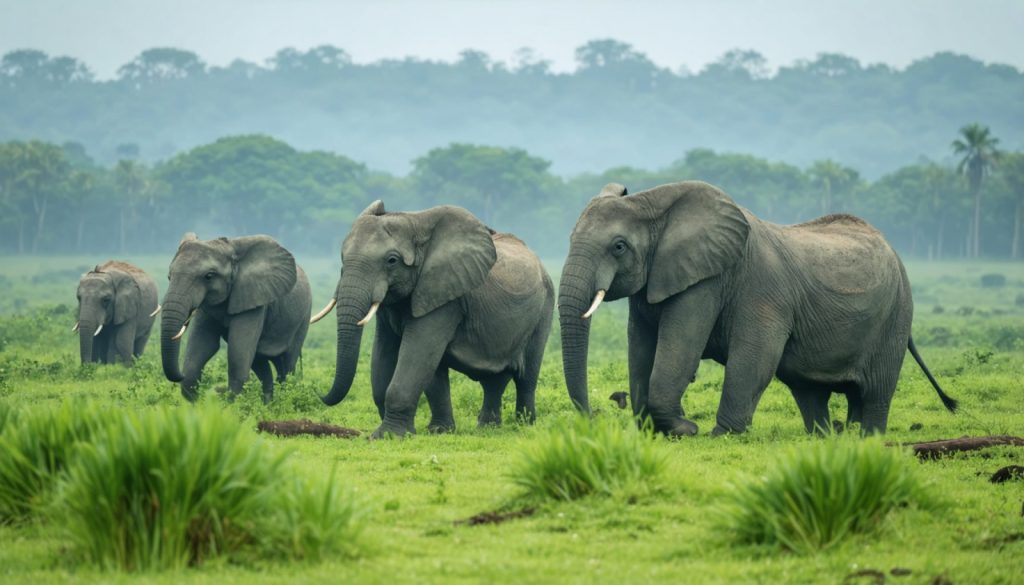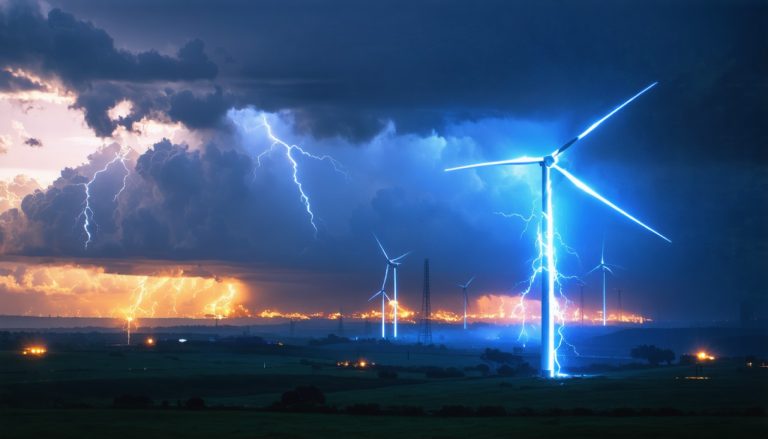
- Real-time communication enabled by global connectivity helps prevent human-elephant conflicts in Africa, showcasing technology’s role in wildlife conservation.
- GPS tracking collars provide critical data on animal movements, aiding in peaceful coexistence between wildlife and human settlements.
- Drones conduct aerial surveillance, capturing illegal activities and facilitating rapid conservation responses to preserve ecosystems.
- Local knowledge and advanced technology converge through wildlife monitoring apps, empowering communities to participate in conservation efforts.
- Organizations like the Wildlife Conservation Society and World Wildlife Fund harness global networks to amplify conservation efforts and share valuable resources.
- Global connectivity fuels modern conservation by fostering collaboration and a holistic understanding of the human-nature relationship.
- The synergy between technology and conservation offers hope for endangered species and the planet’s health.
Imagine a world where wild elephants in Africa communicate their movements to conservationists in real-time, preventing deadly encounters with humans. The intricate dance of modern technology and wildlife conservation has begun to paint this picture today. Through the invisible threads of global connectivity, augmented by satellites, drones, and data analytics, the planet’s most vulnerable creatures are finding unexpected allies in their fight for survival.
Technological marvels like GPS tracking collars have become essential in the conservationist’s toolkit. These devices, akin to a digital lifeline, transmit vital data about an animal’s location and movements to researchers halfway across the globe. Consider the Asian elephant, whose migratory routes often overlap with human settlements. By analyzing real-time data, communities can prepare for peaceful passages, reducing the chances of conflict.
With the sky as the limit, drones soar overhead, capturing high-resolution images of forests and savannas. These aerial sentinels patrol areas that are difficult for humans to access, capturing illegal logging or poaching activities in the act. Their presence deters potential threats and allows conservation teams to strategize interventions swiftly.
Yet, the impact of global connectivity does not rest solely on high-tech gadgets. It’s a tapestry woven with local knowledge and global cooperation. Wildlife monitoring apps empower communities by turning smartphones into vital tools for conservation. Locals can report sightings or suspicious activities, feeding into a network that spans continents. This merging of local insight and advanced technology ensures that conservation is both inclusive and effective.
Noteworthy efforts by projects like the Wildlife Conservation Society and World Wildlife Fund demonstrate the power of unity. These organizations leverage global connectivity to share findings and resources, creating a ripple effect of awareness and action. At its core, their mission is supported by a global network of enthusiasts and experts, all connected by a shared commitment to preserving our planet’s biodiversity.
The takeaway message: Global connectivity is more than an exchange of data; it is the lifeblood of modern conservation. By harnessing the power of connectivity, we cultivate hope for endangered species. Moreover, this digital dialogue fosters a deeper understanding of the intricate balance between humans and nature, urging all of us to play a part in this vital mission.
As we advance further into the digital age, the lesson is clear. Connectivity, when wielded thoughtfully, opens doors to a future where technology and conservation coexist harmoniously—offering a lifeline not only to threatened species but also to our planet’s health as a whole.
Revolutionizing Wildlife Conservation: How Technology is Bridging the Gap
The Role of Technology in Wildlife Conservation: An In-Depth Exploration
The symbiotic relationship between cutting-edge technology and wildlife conservation is reshaping how we protect some of the most endangered species on Earth. While the original article outlines several advancements, there is a wealth of additional insights and practical applications worth exploring, aligning with Google’s E-E-A-T (Experience, Expertise, Authoritativeness, and Trustworthiness) guidelines.
Enhanced Understanding Through GPS Tracking
Advanced Specs of GPS Tracking Systems:
– Battery Life: Modern tracking collars come equipped with solar panels, extending their operational life significantly.
– Data Precision: Can pinpoint locations within a few meters, crucial for monitoring animal movements accurately.
How-To: Install and Utilize GPS Tracking Collars
1. Selection: Choose a collar compatible with the animal size and species.
2. Installation: Expert installation is critical; involve a veterinarian or trained specialist.
3. Monitoring: Use specialized software to receive real-time updates and analyze data efficiently.
Drones in Conservation: High-Flying Sentinels
Specs & Pricing:
– Camera Resolution: Drones typically feature cameras with up to 4K resolution for detailed imagery.
– Range: High-end drones can cover several square miles on a single charge, crucial for large terrains.
Real-World Use Case:
– Anti-Poaching Efforts: Drones in Africa have led to a significant decrease in poaching activities by providing real-time surveillance in remote areas.
Global Connectivity: Beyond Borders
Apps for Wildlife Monitoring: Key Features
– User-Friendly Interface: Enables locals with minimal training to report data efficiently.
– Data Sharing: Real-time sync with global databases enhances collaborative conservation efforts.
Industries Influencing Conservation:
– Technology: Tech giants are increasingly investing in AI-driven conservation projects.
– Telecommunication: Improved infrastructure ensures better data transmission speeds and reliability.
Controversies & Limitations
Despite these advancements, there are challenges:
– Privacy Concerns: GPS tracking raises questions about privacy rights for communities neighboring wildlife habitats.
– Cost Restrictions: High costs of technology can be prohibitive for some conservation organizations.
Future Trends in Conservation Technology
AI Integration:
– Enhanced pattern recognition through AI could predict migration patterns and detect poaching attempts before they occur.
Market Forecast:
– The wildlife conservation technology sector is expected to grow by 15% annually, driven by increased global focus on biodiversity.
Actionable Recommendations
Quick Tips for Supporting Conservation:
– Donations: Contribute to verified conservation organizations harnessing technology effectively.
– Advocacy: Use your platform to raise awareness about tech-driven conservation efforts.
– Education: Stay informed about the latest conservation technologies and their impact on biodiversity.
Related Links
Explore more about the role of technology in conservation from these reliable sources:
– World Wildlife Fund
– Wildlife Conservation Society
This deeper exploration of the intersection between technology and conservation highlights its potential to create a sustainable future for wildlife and ecosystems globally. By understanding both the capabilities and challenges of these technologies, we can more effectively contribute to wildlife conservation efforts.



